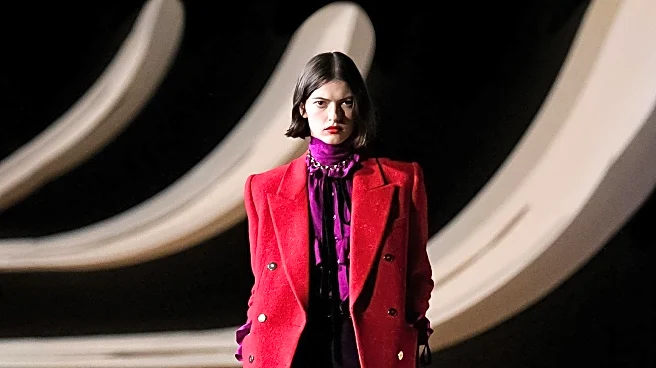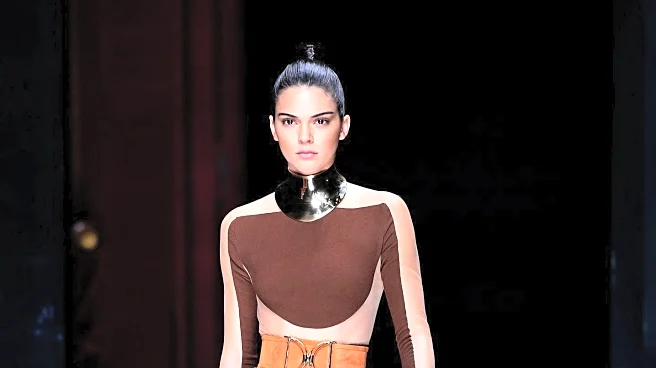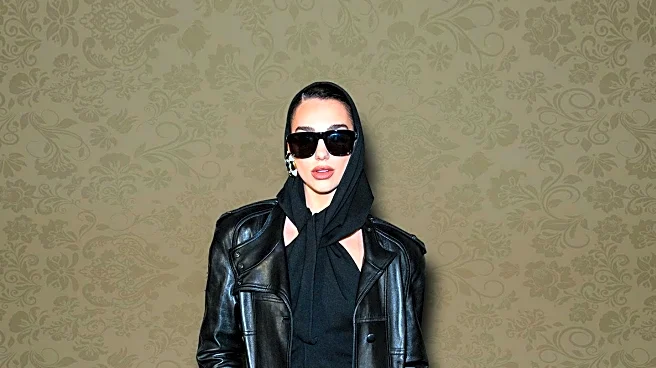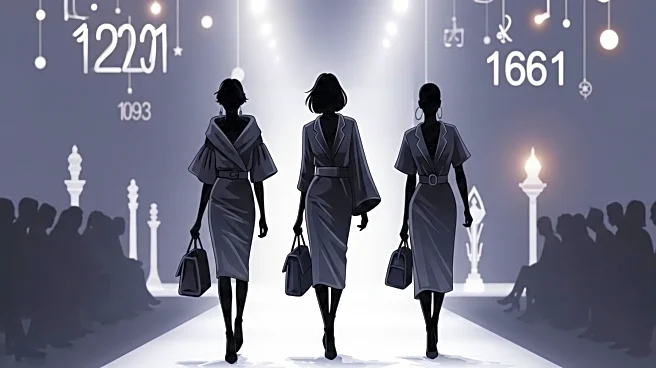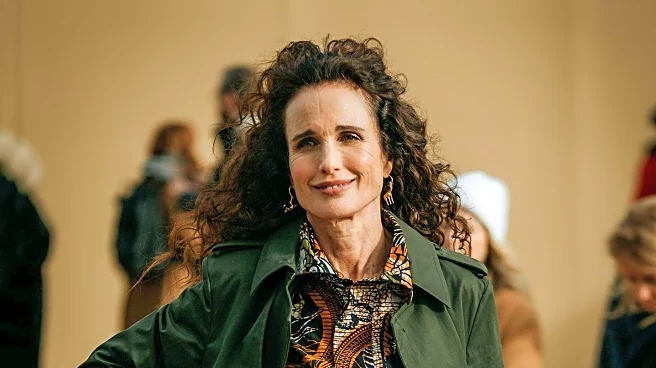What's Happening?
Chloé recently held its latest fashion show within one of UNESCO's conference rooms in Paris, a setting chosen for its symbolic significance. The postmodern venue reflects the brand's spirit of progress and reinvention, aligning with Chloé's historical roots. The event concluded with an elegant dinner attended by notable guests such as Rita Ora, Liv Tyler, and Claudia Schiffer. The collection, designed by Chemena Kamali, explored the concept of couture within the context of Chloé's principles of democratic freedom and ease. Kamali's designs were praised for their joyful spirit and reinterpretation of the house's heritage, offering a vibrant and multifaceted take on femininity.
Why It's Important?
The choice of UNESCO as the venue underscores Chloé's commitment to creativity and dialogue, reinforcing its position as a brand that values openness and the exchange of ideas. This event not only highlights Chloé's Parisian roots but also its influence in the fashion industry, showcasing how historical and cultural contexts can enhance brand narratives. The collection's reception by high-profile guests and fashion icons further cements Chloé's status as a leader in fashion innovation, potentially influencing future trends and inspiring other designers to explore similar themes of heritage and modernity.
What's Next?
Following the successful show, Chloé may continue to explore unconventional venues that align with its brand ethos, potentially setting a trend for other fashion houses. The positive reception of Kamali's designs could lead to increased demand and influence in upcoming fashion seasons. As the industry evolves, Chloé's approach to blending historical context with modern design may inspire other brands to adopt similar strategies, fostering a broader dialogue on the role of fashion in cultural and creative expression.
Beyond the Headlines
The event at UNESCO highlights the intersection of fashion and cultural institutions, suggesting a growing trend where fashion brands seek to align themselves with spaces that symbolize creativity and intellectual exchange. This approach not only elevates the brand's image but also contributes to a broader cultural narrative, where fashion is seen as a form of artistic and intellectual expression. Such collaborations may lead to new opportunities for cultural engagement and partnerships between fashion brands and global institutions.

